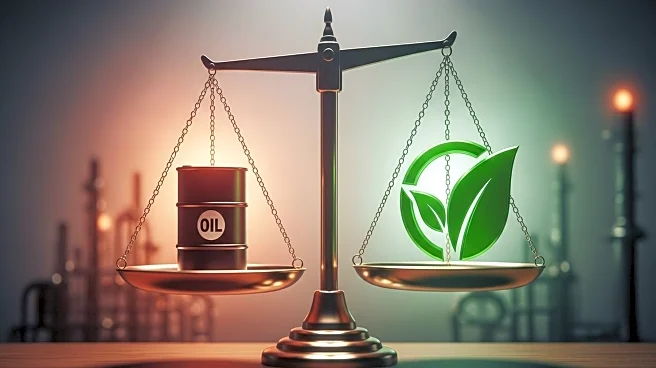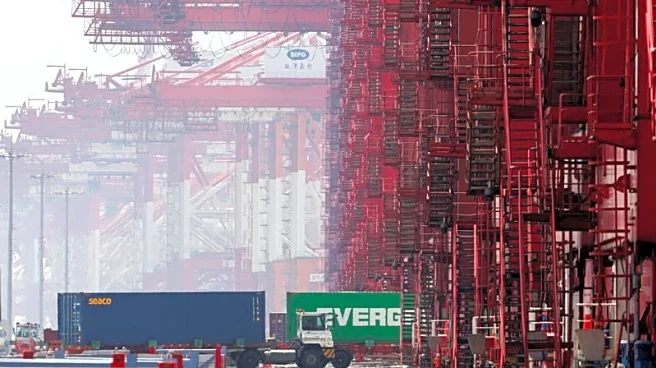What's Happening?
OPEC has released a report indicating that the world oil supply is expected to closely match demand in 2026, as the OPEC+ group increases production. This marks a shift from last month's outlook, which projected a supply shortfall. OPEC+ has opted to unwind some output cuts more rapidly, raising concerns of a surplus and affecting oil prices. The report maintains forecasts for global oil demand to rise by 1.3 million barrels per day this year, with a slightly faster rate in 2026. The robust global economic dynamics, including growth in the U.S., Japan, India, and China, support a stable global growth outlook.
Why It's Important?
The revised outlook from OPEC suggests a narrowing gap between its projections and those of other forecasters, such as the International Energy Agency (IEA). This adjustment could influence global oil markets, as OPEC+ aims to regain market share by increasing production. The potential oversupply in 2026, driven by rising output from OPEC+ and non-OPEC producers, could impact oil prices and economic stability. The report's implications for U.S. energy policy and international relations are significant, as the U.S. is a major oil producer and consumer.
What's Next?
OPEC's report indicates that the world market may see a deficit of 50,000 barrels per day if OPEC+ maintains its current production rate. However, the potential for oversupply remains a concern, with analysts predicting a surplus of 1.6 million barrels per day in 2026. The IEA is scheduled to update its forecasts, which could further influence market expectations. Stakeholders, including energy companies and governments, will need to monitor these developments closely to adjust strategies and policies accordingly.
Beyond the Headlines
The evolving dynamics of global oil supply and demand highlight the complexities of energy transition and geopolitical factors. As OPEC+ adjusts production levels, the balance between maintaining market stability and addressing environmental concerns becomes increasingly critical. The interplay between economic growth, energy policy, and climate change initiatives will continue to shape the future of the oil industry.












